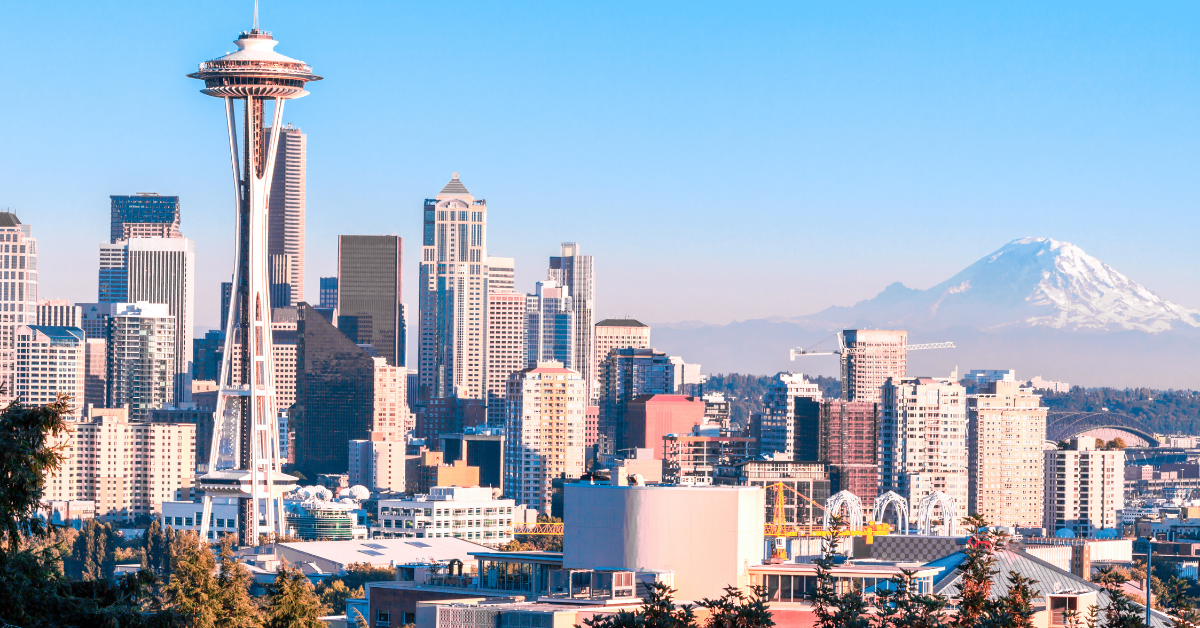Seattle has no official kanji representation, yet in Japan, transcriptions such as “舎路” and “沙港” have appeared in print. These forms reflect not only phonetics but also Japanese perspectives on Seattle as a port city and cultural hub. Today, Seattle is widely known in Japan for coffee, technology, and sports, creating a layered and complex image of the city.
Why Kanji Representations of Seattle Emerged
During the Meiji era, when Western place names were introduced to Japan, newspapers and magazines often used kanji transcriptions to help readers understand. Seattle was no exception, and two forms appeared: “舎路” and “沙港.”
- 舎路 was chosen mainly for its phonetic resemblance, without any deeper meaning.
- 沙港 included the character “港” (port), emphasizing Seattle’s nature as a Pacific port city.
This demonstrates the effort of the Japanese people to interpret foreign cities through their own written language.
| Representation | Reading | Meaning/Intent |
|---|---|---|
| 舎路 | Sharo | Focus on phonetic rendering |
| 沙港 | Shakō | Highlights Seattle as a port city |
Multifaceted Images of Seattle Among Japanese
The impression of Seattle has evolved over time, shifting from a port city to a coffee capital, a hub of advanced technology, and finally a sports city.
Seattle as a Port City
Seattle has long been a hub of trade and immigration. For Japanese people, it was strongly perceived as the “gateway to America.” In the era when sea routes were the main means of travel, the harbor scenery symbolized the entrance to a new world, a sentiment directly reflected in the transcription “沙港.”
Seattle as the Coffee Capital
Seattle is known as the birthplace of Starbucks, and for Japanese visitors, it is strongly associated with coffee and café culture. The original Starbucks store remains a symbolic attraction, while numerous local cafés add diversity and charm to the city’s image.
| Aspect | Example | Japanese Perception |
|---|---|---|
| Coffee Culture | Starbucks | Stylish, liberal city |
| Harbor Scenery | Port and sea | Gateway, hub of exchange |
| Tech Hub | Microsoft, Amazon | Innovative and dynamic city |
Seattle as a Hub of IT and Aerospace Industries
Seattle is home to Microsoft, Amazon, and Boeing, making it a global center of innovation and industry. For Japanese people, it represents a forefront of technology and economic power.
- Microsoft and Amazon are directly connected to everyday life in Japan, making them highly familiar.
- Boeing symbolizes the aerospace industry, with deep ties to Japanese airlines, strengthening the city’s economic significance.
| Company | Industry | Impact on Japan |
|---|---|---|
| Microsoft | IT | Ubiquitous through Windows and Office |
| Amazon | E-commerce & Cloud | Integral to shopping and AWS services |
| Boeing | Aerospace | Strong ties with Japanese airlines |
Seattle as a Sports City
Seattle’s global recognition is not only cultural or industrial but also deeply tied to sports.
Baseball and Japanese Players
The Seattle Mariners became a special team for Japanese fans thanks to Ichiro Suzuki’s legendary career. His records and achievements made Seattle widely known in Japan as “Ichiro’s city,” and T-Mobile Park became a must-visit site for Japanese tourists.
American Football Frenzy
The NFL’s Seattle Seahawks are known for their passionate fanbase. On game days, the entire city comes alive, and the fans, referred to as the “12th Man,” are considered part of the team itself. This unique culture has drawn attention from Japanese sports fans as well.
The Rise of Soccer Popularity
Seattle Sounders FC of Major League Soccer has also gained recognition, often drawing tens of thousands of fans to matches. The unity and energy of the crowd resonate strongly with Japanese soccer fans.
| Sport | Team | Japanese Perception |
|---|---|---|
| Baseball | Seattle Mariners | Ichiro’s city, deeply familiar |
| American Football | Seattle Seahawks | Culture of passionate fandom |
| Soccer | Seattle Sounders | Strong sense of unity and excitement |
Japanese Perspectives Embedded in Kanji Transcriptions
The kanji transcriptions of Seattle were not merely phonetic renderings; they were cultural reflections of how the Japanese viewed the city. “沙港” emphasized its role as a port, while “舎路” preserved its foreign phonetic character. Over time, additional images—coffee culture, IT innovation, and sports—have layered onto the original perception, making Seattle a multifaceted and approachable city for Japanese people.
Conclusion
Seattle has no official kanji transcription, but “舎路” and “沙港” remain as cultural artifacts of how Japanese people historically understood and represented the city. While the port-city identity is embedded in the kanji, modern images of Seattle—coffee, technology, and sports—have added depth to its reputation.
The legacy of Ichiro Suzuki elevated Seattle to a special place in the hearts of Japanese fans, symbolizing a deep connection that extends beyond geography. By understanding the history of its kanji representations and the evolving perceptions, we can see that Seattle is not just a foreign city, but a place intricately tied to Japan through culture, industry, and sports.






